Endorsements Justic Eco-Debt
 Click logo to return to 'links-page'
Click logo to return to 'links-page'
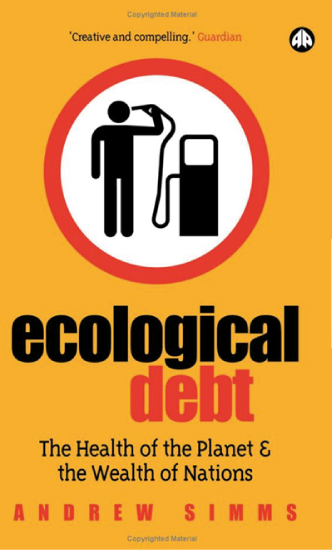
"Contraction and Convergence [C&C] would reduce the complexity of climate negotiations to two simple variables that would need to be agreed:
• the target atmospheric concentration of CO2, and
• the date when entitlements converge to being equal per capita.
The approach offers the best chance of solving a great, and immensely
destructive, international paradox. Interestingly, C&C would also fit the stated position of the otherwise recalcitrant United States. In his statements on climate change, President George W. Bush set out specific criteria for what sort of treaty the US would be willing to sign. They included: a truly global deal including emissions targets for developing countries (or, from another perspective, entitlements) and the need for a science-based approach. Contraction and convergence, with its global participation design and formal greenhouse gas concentration target is exactly such an approach."
"Ecological Debt"
Andrew Simms on C&C
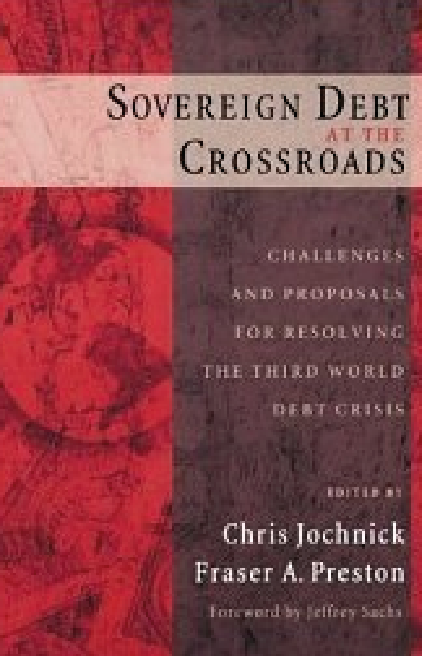
A formula is used such that, in an agreed timeframe, entitlements to emit are predistributed in a pattern of international convergence so that, globally, shares become equal per capita. This procedure, unavoidable if chaos is to be prevented, was given the term "contraction and convergence" [C&C] by the London-based Global Commons Institute (Meyer 2000). Interestingly, C&C would fit with the stated
position of the otherwise recalcitrant United states. In his statements on climate change, President George W. Bush has set out specificcriteria for what sort of treaty the United states would be willing to support. How they explain that logic to India, China, Brazil, or Ethiopia will make
for an interesting ministerial meeting. They have shown the necessary contraction but not the convergence. yet the two must occur together. Applied more generally, there is a sentiment absolutely in line with
C&C and a way of reconciling the ecological debt crisis. But it is possible that neither the C&C framework nor the approach of an environmental war economy will succeed alone without reform of our monetary system. Spare emissions permits from under-consuming countries in the C&C framework could be traded in a special currency, the "EBCU" (energy-backed currency unit). The EBCU issue to governments would be a one-time event on the same per capita basis as the emission permits. Spare permits under a given
ceiling would be made available upon payment in EBCUs.
Sovereign Debt at the Crossroads
Chris Jochnick Fraser A Preston
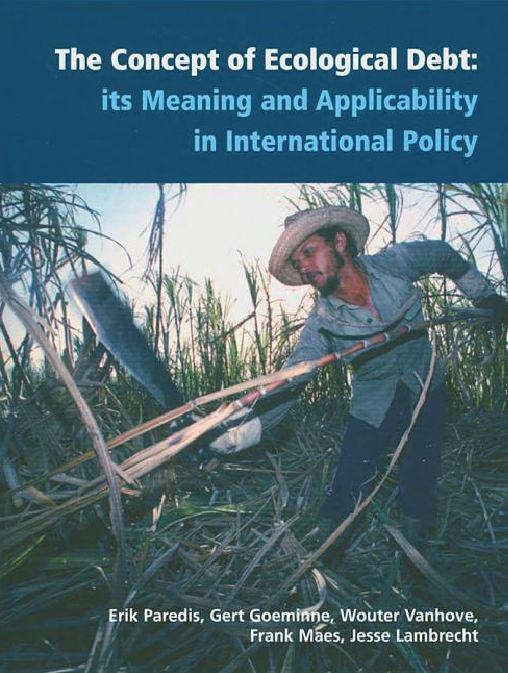
The problem of global warming can illustrate the models. In this case the over-consumers of the North and under-consumers of the South follow a path of Contraction and Convergence [C&C].
The Concept of Ecological Debt
Erik Paredis, Gert Goeminne, Wouter Vanhove, Frank Maes, Jess Lambrecht
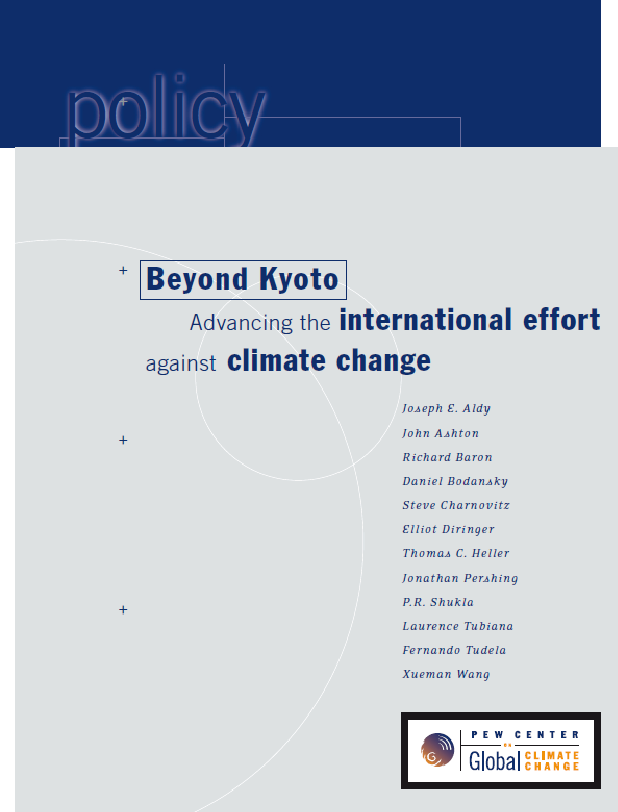
The “Contraction and Convergence” proposal, developed by Aubrey Meyer, assigns every human being an equal entitlement to GHG emissions. All countries should thus move towards the same per capita emissions. Total emissions should contract over time, and per capita emissions should converge on a single figure. The actual convergence value, the path towards convergence, and the time when it is to be reached would all be negotiable. The proposal allows for the trading of emissions entitlements using mechanisms of the kind permitted under the Kyoto Protocol.
At one level, this is compelling. It offers a long-term architecture for an international emissions regime, potentially robust across several of the equity dimensions identified in this paper. It would not require developing countries to shift their immediate focus away from their basic needs: their emissions constraints would bite gradually as per capita emissions increased. And by emphasizing entitlements as well as commitments, it could help address the sense of inequity that arises from the unrequited “carbon debt” of past emissions by industrialized countries.
Ultimately, almost any conceivable long-term solution to the climate problem will embody, at least in crude form, a high degree of contraction and convergence. Atmospheric concentrations of GHGs cannot stabilize unless total emissions contract; and emissions cannot contract unless per capita emissions converge. The practical question is not whether this is a reasonable scheme, but whether the quickest way to realize it is to base the next stage of the negotiations explicitly on it.
The contraction and convergence proposal plays an important role in the climate process. It focuses attention on the ethical questions at the heart of the climate problem, which no long-term solution can afford to ignore. If supported by a critical mass of countries, it would become an important force in the negotiation. The ideas behind the proposal will remain relevant to any discussion of climate and equity for as long as the search continues for a global response to climate change.
Beyond Kyoto PEW Centre
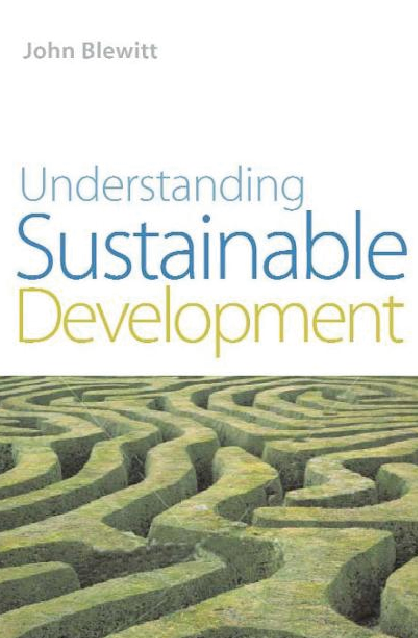
Creative Policy Solutions: Contraction and Convergence
Aubrey Meyer, musician and composer, former member of the UK Green Party and co-founder of the Global Commons Institute in 1990, is an active promoter of climate mitigation through ‘Contraction and Convergence’ - a practical and equitablc approach to combating climate change. He believes that those economists who argue that climate mitigations is too expensive a policy option effect ively condone the murdering of many of the world's poor. He argues (Meyer 2000) that although greenhouse gas emissions have been accumulating in the atmosphere as a result of industrialization for over 200 years, suggesting
that in principle every citizen on the planet has an equal right to emit, there must be an equitable individual allowance based on safe global emissions targets provided by the best scientific understanding available. Contraction and Convergence offers a simple model on which an international agreement on greenhouse gas emissions can be based.
It can be achieved in three stages: -
2 calculating the speed at which emissions need to be reduced to reach that target;
3 calculating the consequent total carbon budget and allocating a per capita allowance throughout the world.
The result will be that per capita emissions from each state wil converge at a fair level while the global sum of emissions will 'contract’. Meyer believes that greenhouse gas
concentrations should contract to 450 ppm and that convergence to equal per capita emissions should be achieved by 2030. This process requires the creation of a carbon currency, which could finance clean technology and eradicate Third World debts, combat global poverty, and minimize the economic differences between the developed and developing worlds. As Flannery (2005) notes, this ‘strong medicine,' could be the foundation for a new Kyoto that does away with ‘free-riders’ but will mean definite political and economic costs for the developed nations. Contraction and Convergence is thus a vehicle for achieving global equity not only in CO2 emissions but also in economic wealth, prsoperity and human well-being. The rich nations of the North are by far the biggest emitters of greenhouse gases. Even today, Africa's accumulated emissions are a small fraction of those produced by the UK. But Contraction and Convergence can only be realized of the participation, dialogue, debate and accommodation that is beginning to characterize global politics in major areas of environmental and sustainability policymaking develop further. NGO pressure groups, independent think-tanks, swcientific organizations and corporate and government bodies, which form 'epistemic' or knowledg-based communities must work with rather than against each other if agreement on climate change is to be secured. As Gough and Shackley (2001. p332) write: -
"The science-policy nexus represented by the IPCC and supporters of the UNFCCC Kyoto Protocol, with its inclusion of Government officials, international organizations, scientists, NGOs, business and so on incorporates the key elements of an epistemic community. A distinctive knowledge-based approach to climate assessment and policy has emerged within the IPCC in which the NGOs have been instrumental both as expert advisors and in provideing the legitimacy of inclusiveness needed for the epistemic coalition to have sufficient authority. The fact that environmental NGOs (ENGOS), governmental and intergovernmental actors, the scientific establishement and even some business groups are in coaltion can be atermendously powerful influence. NGOs that have helped to create the climate change epistemic community have needed to move their own terms of reference towards science and technical policy measures and resonses away from ethics and overtly political matters, such is the price of membership of the coalition. This is to shut the door on the use of a range of potnetially useful concepts and devices such as global equity and North-South development."
Understanding Sustainable Development
John Blewitt

Ecological debt proponents advocate a process of contraction and convergence.
The Ecological Revolution: Making Peace with the Planet
John Bellamy Foster

We are living in a world that the CIA coined VUCA – times of volatility, uncertainty, complexity and ambiguity. If one looks at the nature of the recent commodity price crisis (2007), financial crisis (2008), economic recession (2009), public debt crisis and oil spill disaster in the Gulf of Mexico (2010) one can arguably identify a “transgression problem” (Pascal Lamy) at their root. Humanity is transgressing thresholds at two levels:
1. Humanity is transgressing reasonable limits of debt - The recent recession was to a large degree caused by the collapse of an asset bubble that inflated financial values well beyond the true value of underlying economic resources just for the sake of stimulating demand. Once the asset price bubbles burst and increased public borrowing was needed to protect the banks and to fund economic recovery, public sector debt and gross external debt rose sharply. According to IMF calculations the total cost of the financial crisis will amount to the astronomic figure of $12 trillion or 20% of annual world output.
2. Humanity is transgressing “planetary boundaries” - Under the weight of both the growing size and the intensifying activity of humanity, human impact is no longer only at local levels. Global natural systems are being affected. Climate is the most visible system that is being destabilized, but others are equally critical (oceans, fresh water, biological diversity etc.). Earth systems scientists are working on nine planetary boundaries where dangerous tipping points into less favorable conditions for human survival are highly likely.
These phenomena are similar in nature and have impacts that go far beyond the financial and ecological systems: When assessing the progress that has been made on the Millennium Development Goals, Secretary General of the United Nations, Ban Ki Moon, had to admit in June that improvements in the lives of the poor have been unacceptably slow, regionally uneven and that some hard-won gains are being eroded again by the climate, food and economic crises. In fact all phenomena are related to governance failures:
1. Failure of governance to limit debt levels in relation to GDP;
2. Failure of governance to acknowledge planetary boundaries and to decouple GDP from energy and resources;
3. Failure of governance to meet globally accepted targets in redistributing GDP for the benefit of the most vulnerable persons in the world.
This development path is unsustainable and prone to destabilization and conflict, passing on to future generations vast and perhaps crippling financial, ecological and social debts. What is needed is a higher degree of systemic resilience. Therefore, governance agendas should be transformed from single issue-objectives to multiple, integrated social-ecological ones:
1. As to the finance system governance should aim at higher levels of bank capital and liquidity and at taking precautionary measures to prevent risks without endangering sustainable growth.
2. As to national budgets the task is to reduce the increasing levels of public debt.
3. Concerning planetary boundaries the time is ripe for identifying scientifically endorsed resource and emission caps, and for establishing reduction targets associated with these caps - “Contraction and convergence” strategies.
There is also a strong case for getting prices right in order to properly account for energy and material flows. As to global poverty governance needs to reinforce the MDGs and Rio Process and deliver tangible results. In a way one of the key challenges for economic governance is to devise broader measures of well-being to assess the right things along the triple bottom line of people, planet and growth in the right way, so that policy makers know towards what they should steer and what progress they are making in that direction. “What gets measured gets done.” This is a task that has begun with the Istanbul declaration of the OECD world forum in 2007. To monitor the state of an economy, there should be an accepted set of performance indicators to help diagnose the state of the system. Today one single indicator prevails – GDP growth. Growth is essential. But the question is – what kind of growth. To tackle this question involves a twin effort in governance: To complement GDP growth as the principal indicator of economic development with other indicators of ecological and social progress and to refine GDP so that is covers much more than material growth. Today this is no longer an academic exercise. It is key for a governance system that is responsibly addressing the integrated social-ecological challenges and adequate to the volatility, uncertainty, complexity and ambiguity of our times.
Sustainability and Global Governance
Wolfgang Schüssel
The GES Advisory Board provides advice on the development of the GES, may suggest themes and special events at the GES, helps attracting high-ranking participants, and may propose new Advisory Board members. Its members benefit from a privileged access to the GES’s business, political, civic, and academic communities, and to state-of-the-art economic research on global affairs. 03-06-2011
Full listed GES Advisory Board
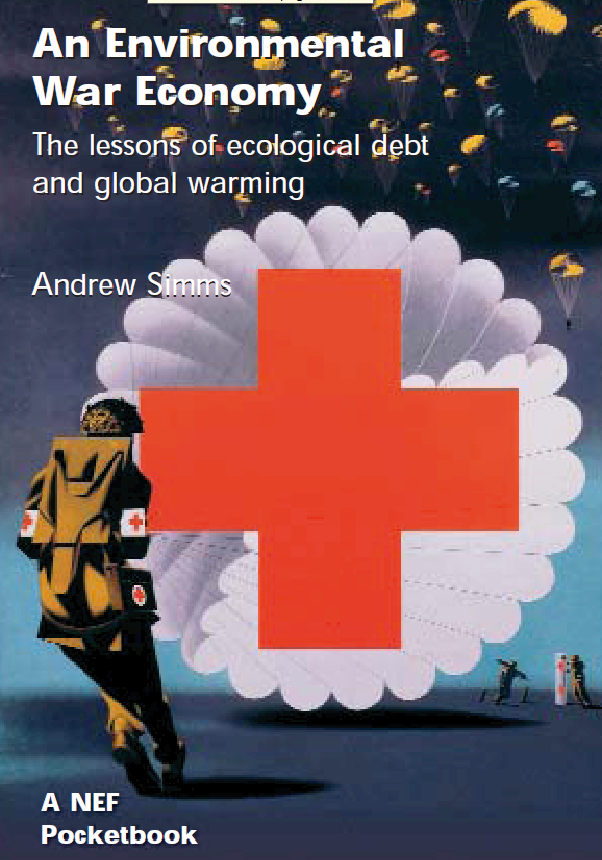
The adjustment process described must be set within an
orderly framework. The best guide to how this might work is
the approach known as contraction and convergence, which
is explained at the end of this chapter. But it’s worth
examining how feasible this approach is.
The Byrd-Hagel resolution accepts that global emissions must be both controlled and reduced. The implication is that a total global emissions budget must be agreed, capping greenhouse gas concentrations in the atmosphere. Global emissions will then be lowered until they reach a point within the environment’s limits of tolerance. The corollary is that the US, committed by its own declaration of independence to human equality, can embrace the contraction and convergence model pioneered by the London-based Global Commons Institute.
“Contraction and convergence” provides an effective, equitable and efficient framework within which governments can work to avert climate change. The countries of the North would benefit from the export markets created by restructuring. The whole world would benefit by slowing the rate of damage. Its potential as an antidote to global warming has been widely endorsed, not least by industries such as insurance which are in the front line of climate change. Even some of the more progressive fossil fuel producers have acknowledged that it may offer a promising way forward.
An Environmental War Economy
Andrew Simms NEF
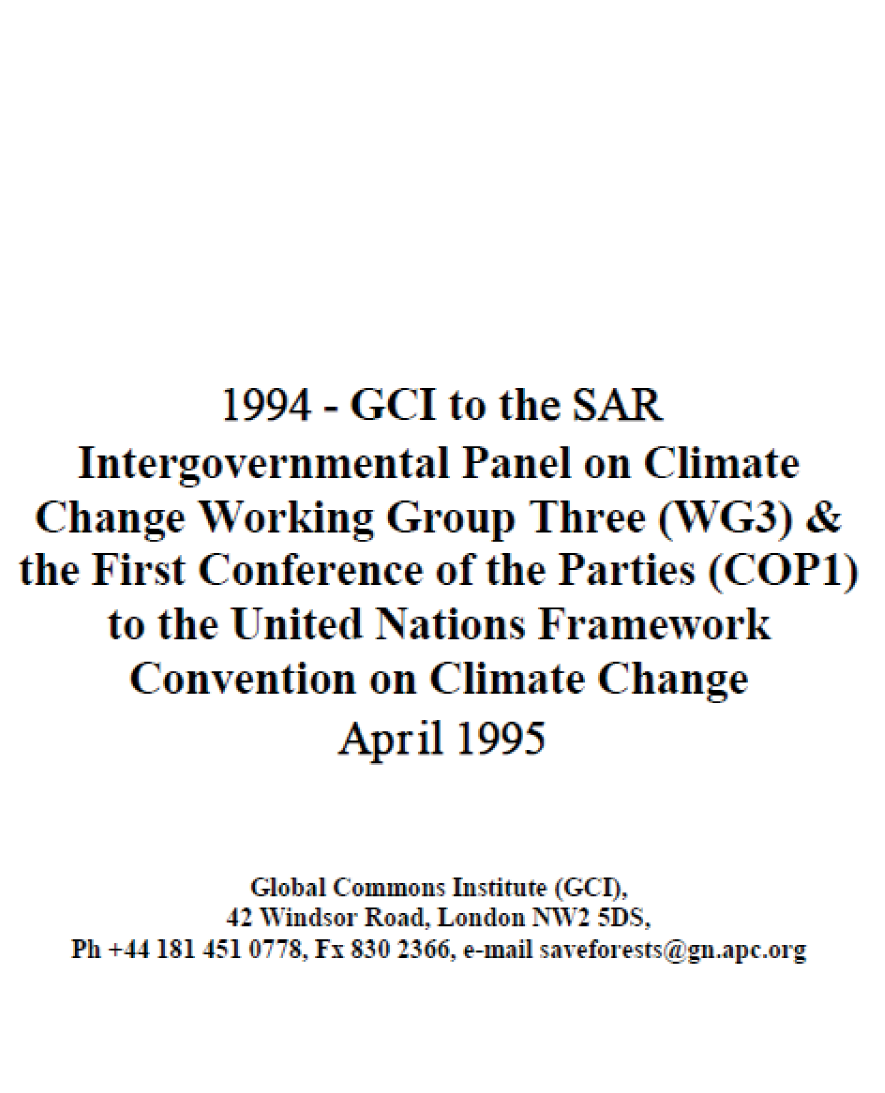
GCI Evidence to the IPCC Second Assessment [SAR 1995]
'The Economics of Genocide' in SAR's Global Cost/ Benefit Analysis.
[See also here: - MON_ECO]
The key question which now also arises is this: - are all human lives equally valuable or not? Moreover, should economists employed by the nations responsible for causing the problems of climate change, have the job of valuing the lives which are going to be lost? And even more to the point, should they value the lives of the people who are not responsible for creating the climate changes, as less valuable than the lives of those responsible? Surely we all have a fundamentally equal right to be here: surely each person is equally valuable in this fundamental way? So far the global cost/benefit analysts say no, this is not the case.
Take for example the (UK-government-funded) Centre for the Social and Economic Research of the Global Environment (C-SERGE) based in the UK. David Pearce is one of its directors and he is also the IPCC’s convening lead author on “Social Costs”. C-SERGE has already published a valuation of the lives to be lost. In a recent research paper it stated that the cash value of a “statistical life” in the EC or the USA is $1,500,000 per head, but in “poor” countries such as China, it is only $150,000.4 [The disparate figures are derived from peoples’ ability-to-pay for damage insurance]. In global cost/benefit analysis, this means therefore these economists discard a real Chinese life ten times more easily than a real life in the EC or the USA. This an example of how you keep the damage costs below the emissions mitigation costs. You just quietly devalue the lives of the people who aren’t in the EC and the USA and hope nobody questions “business-as-usual” with genocide written into the bottom-line. This approach is now formally embedded in the text of IPCC’s Second Assessment Report (SAR) in the section prepared by the Western economists dominant in Working Group Three (WG3) on "Economic and other Cross-Cutting Issues".
This approach is one of the great scandals of our times. It has now been dubbed “the Economics of
Genocide” in some of the world’s major media and an international protest campaign over this has been growing since it was launched by GCI in June 1994.
The Godfather of these economists, William Nordhaus, has stated that “the economic perspective in global cost/benefit analysis attempts to condense the complex set of impacts over, space, time and sectors by summarising them in a scalar measure of value . . . the fact that the scalar is in monetary units is not really crucial: it could be in spotted-owl equivalents.” For GCI this is evidence of confusion in the reasoning of these economists at this fundamental level. On the one hand they say that monetary units are not crucial [spotted-owl equivalents will do just as well as money] and on the other hand they say that monetary units are crucial [peoples varied ability-to-pay - in money - determines their rights and their relative worth].
The question that haunts their confusion is this: why if one spotted owl equals one spotted owl, doesn’t one human equal one human? In the twisted logic of global cost/benefit analysis, it turns out that people do not have an equal right to survive even though spotted owls do. This is another way of saying that people do not have an equal right to be here in the first place; your rights are proportional to your income. In terms of achieving sustainable development globally, this is nonsense. For practical as well as ethical purposes, each human being is - and must be recognised as - the fundamentally equal unit for measuring sustainability and this is the irreducible level of decision-taking.
The result was IPCC Second Assessment Report [SAR] 'Policy Makers Summary':
"Literature on the subject in this section is controversial and mainly based on research done on developed countries, often extrapolated to developing countries. There is no consensus about how to value statistical lives or how to aggregate statistical lives across countries. Monetary valuation should not obscure the human consequences of anthropogenic climate change damages, because the value of life has meaning beyond monetary value."

Raul Estrada -
Chairman Kyoto Protocol Negotiations
Contraction and Convergence [C&C] - See http://www.gci.org.uk
"Long before the end of the Framework Convention negotiation, the Global Commons Institute (GCI) has presented a proposal on contraction and convergence,
aimed to reach equality in emissions per capita.
We all in this room know the GCI model where contraction is achieved after all governments, for precautionary reasons, collectively agree to be bound by a target of global GHG emissions, making it possible to calculate the diminishing amount of greenhouse gases that the world can release each year in the coming century, subject to annual scientific and political review. The convergence part of the proposal means that each year's global emissions budget gets shared out among the nations of the world so that every country converges on the same allocation per inhabitant by an agreed date. Countries unable to manage within their shares would, be able to buy the unused parts of the allocations of other countries. The entitlement of rights transferred in this trading is legitimised by the per inhabitant criteria. Level of contraction and timing of convergence should be negotiated on the basis of the precautionary principle. Suggestions for emission reductions are well known and convergence should be achieved at medium term to satisfy legitimacy. I have read that the Chairman of IPCC’s WG I, Sir John Houghton, has said that this is the logical approach. Analysis of C&C in TAR is a must if equity is going to be taken into account in the report."
Proceedings 2nd IPCC Expert Meeting on
Development, Sustainability and Equity
Havana, Cuba 23-25 February 2000
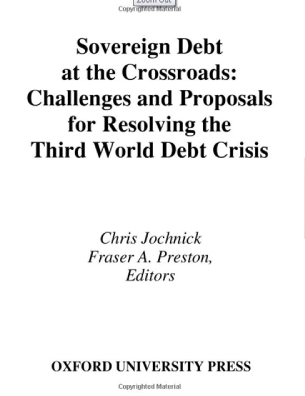
Contraction and Convergence. It is unlikely that everyone in the world will ever use identical amounts of fossil fuels. However, it is highly likely that any deal to manage the global commons of the atmosphere will have to based on this principle. In an agreed timeframe, entitlements to emit are predistributed in a pattern of international convergence so that globally they become equal per capita. This procedure is unavoidable if chaos is to be prevented. But it is possible that this framework will succeed without reform of our moneytary system.
Sovereign Debt at the Crossroads: Challenges and Proposals for
Resolving the Third World Debt Crisis Chris Jochnick, Fraser A. Preston

Environmental Justice Network Forum (EJNF) endorse Contraction and Convergence
18th October 1998
The EJNF is a network of most of the major NGOs in South Africa
On the 18th of October 1998 they adopted the following resolution.
"Noting that global warming and climate changes are having growing and adverse impacts on South Africa and her peoples, such as flash flooding, increasing aridity, increasing crop insecurity and spread of tropical diseases such as malaria, and recognising that there has been a history of a profound imbalance within the country and between all the countries of the world in the consumption of the resources which have triggered these global changes, EJNF resolves to promote corrective actions within and between nations that deal both with the unequal consumption and the overconsumption of the resources in question particularly those which lead directly to the release of greenhouse gas (ghg) emissions such as fossil fuels
EJNF commits itself to campaign in support of the "Contraction and Convergence" proposals that specifically embody the principles of global equity and sustainability. This means that EJNF will advocate that the apportionment of future international greenhouse gas (ghg) emissions entitlements shall be the result of a deliberate convergence process to a point of equal per capita shares globally by a date to be negotiated by the United Nations Framework Convention on Climate Change."